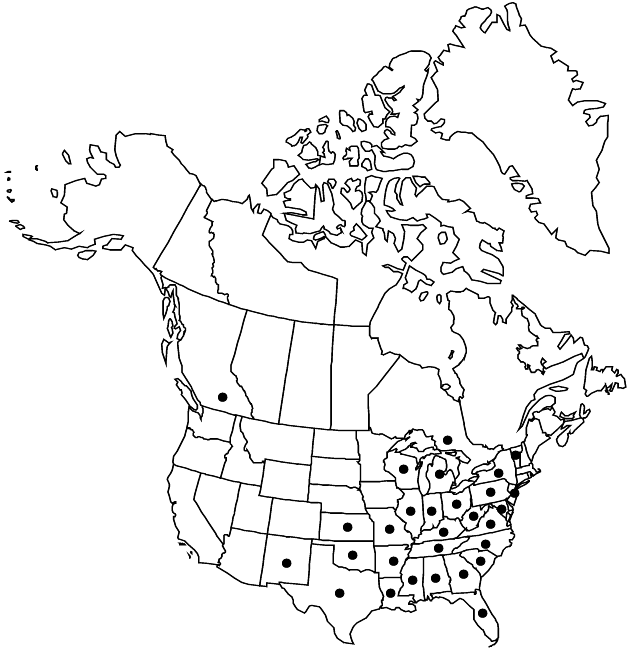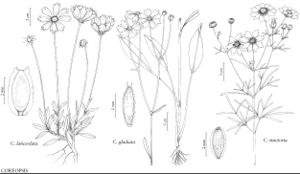Difference between revisions of "Coreopsis lanceolata"
Sp. Pl. 2: 908. 1753.
FNA>Volume Importer |
FNA>Volume Importer |
(No difference)
| |
Revision as of 18:48, 24 September 2019
Perennials, 10–30(–60+) cm. Aerial nodes proximal to first peduncle usually 1–3(–5+), distalmost 1–3 internodes 1–2(–8+) cm. Leaves: basal and cauline on proximal 1/4–1/3(–1/2) of plant heights; petioles 1–5(–8+) cm; blades simple or with 1–2+ lateral lobes, simple blades or terminal lobes lance-ovate or lanceolate to oblanceolate or lance-linear, 5–12 cm × 8–15(–18+) mm. Peduncles (8–)12–20(–35+) cm. Calyculi of lance-ovate to lance-linear or linear bractlets 4–8(–12) mm. Phyllaries deltate to lance-deltate, 8–12+ mm. Ray laminae yellow, 15–30+ mm. Disc corollas 6–7.5 mm, apices yellow. Cypselae (2.6–)3–4 mm, wings ± spreading, ± chartaceous, entire. 2n = 26 (+ 0–4B).
Phenology: Flowering (Mar–)May–Jul(–Aug).
Habitat: Sandy soils, ditches and roadsides, other disturbed sites
Elevation: 30–500(–1000+) m
Distribution

B.C., Ont., Ala., Ark., Fla., Ga., Ill., Ind., Kans., Ky., La., Md., Mich., Miss., Mo., N.J., N.Mex., N.Y., N.C., Ohio, Okla., Pa., S.C., Tenn., Tex., Vt., Va., W.Va., Wis.
Discussion
Plants that have been called Coreopsis lanceolata var. villosa Michaux often have 5+ aerial internodes 6+ cm long proximal to the first peduncle; they may merit recognition as a distinct taxon or may be hybrids (or derivatives) from crosses between C. lanceolata and C. pubescens.
Selected References
None.
